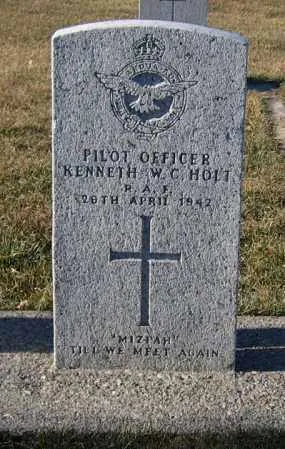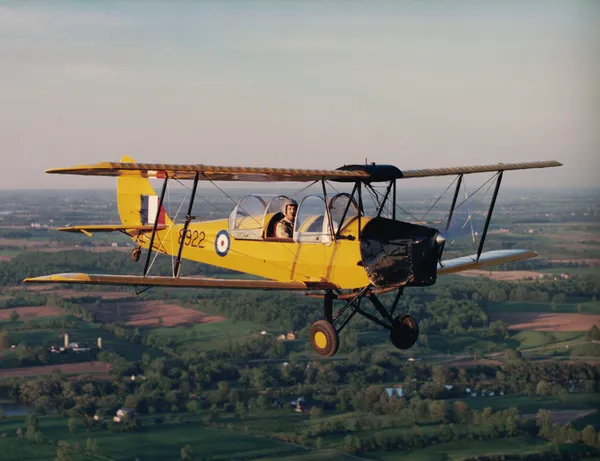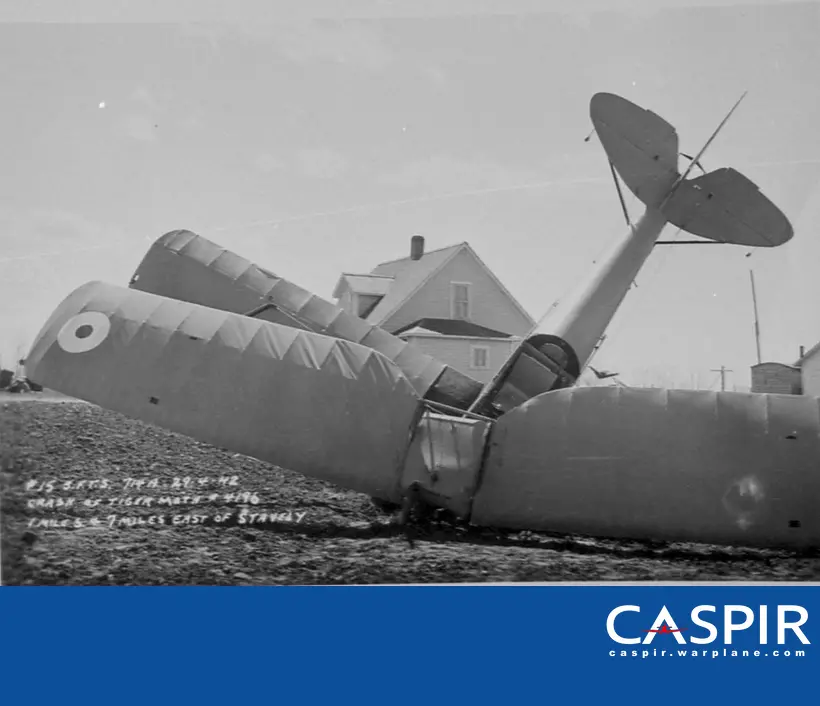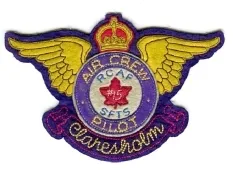Holt, Kenneth William Collis (Sergeant)
Killed in Flying Accident 1942-April-29


Birth Date: 1920-October-12
Born:
Parents: Son of Mr. and Mrs. S. A. Holt, of Horfield, Bristol, England.
Spouse:
Home: Horfield Bristol, UK
Enlistment:
Enlistment Date: unkown date
Service
RAF
Unit
15 SFTS- Service Flying Training School
Base
Claresholm, Alberta, Canada
Rank
Sergeant
Position
Pilot Instructor
Service Numbers
1313761
Home
Crew or Other Personnel
Moth, Tiger 4196
Moth, Tiger serial: 4196

The de Havilland DH.82 Tiger Moth is a 1930s British biplane designed by Geoffrey de Havilland and built by the de Havilland Aircraft Company. It was operated by the Royal Air Force (RAF) and many other operators as a primary trainer aircraft. In addition to the type's principal use for ab-initio training, the Second World War saw RAF Tiger Moths operating in other capacities, including maritime surveillance and defensive anti-invasion preparations; some aircraft were even outfitted to function as armed light bombers.
The Tiger Moth remained in service with the RAF until it was succeeded and replaced by the de Havilland Chipmunk during the early 1950s. Many of the military surplus aircraft subsequently entered into civil operation. Many nations have used the Tiger Moth in both military and civil applications, and it remains in widespread use as a recreational aircraft in several countries. It is still occasionally used as a primary training aircraft, particularly for those pilots wanting to gain experience before moving on to other tailwheel aircraft.
Overseas manufacturing of the type commenced in 1937, the first such overseas builder being de Havilland Canada at its facility in Downsview, Ontario. In addition to an initial batch of 25 Tiger Moths that were built for the Royal Canadian Air Force (RCAF), the Canadian firm began building fuselages which were exported to the UK for completion. Canadian-built Tiger Moths featured modifications to better suit the local climate, along with a reinforced tail wheel, hand-operated brakes (built by Bendix Corporation), shorter undercarriage radius rods and the legs of the main landing gear legs being raked forwards as a safeguard against tipping forwards during braking. In addition the cockpit had a large sliding canopy fitted along with exhaust-based heating; various alternative undercarriage arrangements were also offered. By the end of Canadian production, de Havilland Canada had manufactured a total of 1,548 of all versions. Wikipedia
Aircraft Images
Moth, Tiger 4196
Moth, Tiger I 4196
Category A damage on 1942-04-29 while with 15 Service Flying Training School at Claresholm, Alberta. Instructor Sergeant Kenneth William Collis Holt killed.
Aircraft lost control in a turn at 300 feet, entered a spin and crashed 5 miles east of Stavely, near the forced landing field at Claresholm, Alberta. Believed to be on loan to 2 Flying Instructors School that was formed as a subunit of 15 Service Flying Training school two days earlier on 1942-04-27 at Claresholm Alberta.
{{link,canada,https://heritage.canadiana.ca/view/oocihm.lac_reel_c12350/829?r=0&s=2,Operations Record Book Accident 1942-04-29 }} {{link,canada,https://heritage.canadiana.ca/view/oocihm.lac_reel_c12350/828?r=0&s=1,Temporary Formation of 2 FIS at Claresholm}}1940-09-25 Taken on Strength 2019-08-20
1941-January-19 Accident: 15 Elementary Flying Training School Loc: Between Kronan And Regina Names: Johnson | Morgan
1942-April-29 Accident: 15 Service Flying Training School Loc: Stavely Names: Holt | Jamieson
1942-06-22 Struck off Strength 2019-08-20

Unit Desciption
15 SFTS (15 Service Flying Training School)
Graduates of the EFTS "learn-to-fly" program went on a Service Flying Training School (SFTS) for 16 weeks. For the first 8 weeks the trainee was part of an intermediate training squadron; for the next 6 weeks an advanced training squadron and for the final 2 weeks training was conducted at a Bombing & Gunnery School. The Service schools were military establishments run by the RCAF or the RAF.
There were two different types of Service Flying Training Schools. Trainees in the fighter pilot stream went to an SFTS like No. 14 Aylmer, where they trained in the North American Harvard or North American Yale. Trainees in the bomber, coastal or transport pilot stream went to an SFTS like No. 5 Brantford where they learned multi-engine technique in an Airspeed Oxford, Avro Anson or Cessna Crane.

For More Information on RCAF Station Claresholm see here
RCAF.info - RCAF Station Claresholm AB
RCAF.info - Relief Landing Field Woodhouse AB
RCAF.info - Relief Landing Field Champion AB
![]() Vintage Wings - Ghosts Of Southern Alberta
Vintage Wings - Ghosts Of Southern Alberta
BCMC Claresholm History
![]() Bomber Command Museum of Canada - 14 SFTS Claresholm AB
Bomber Command Museum of Canada - 14 SFTS Claresholm AB
Wings Over Claresholm Alberta Video
Project 44 BCATP